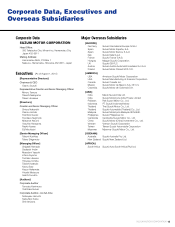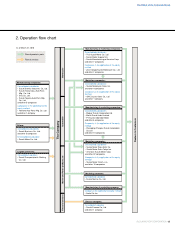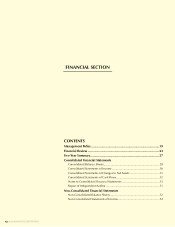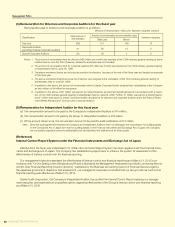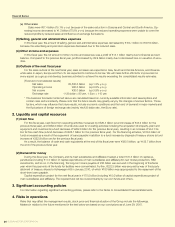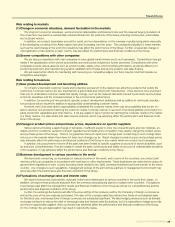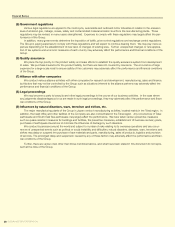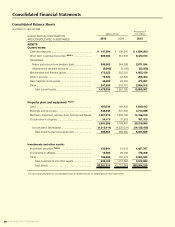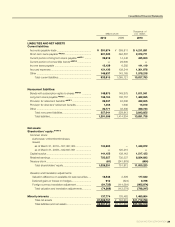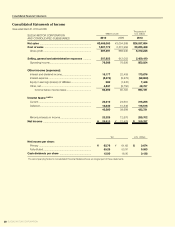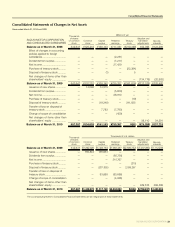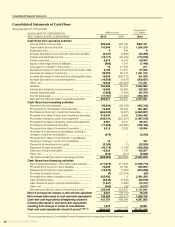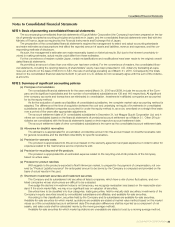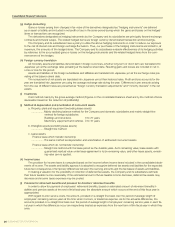Suzuki 2010 Annual Report Download - page 26
Download and view the complete annual report
Please find page 26 of the 2010 Suzuki annual report below. You can navigate through the pages in the report by either clicking on the pages listed below, or by using the keyword search tool below to find specific information within the annual report.
SUZUKI MOTOR CORPORATION 25
Riskrelatingtomarkets
(1)Changeineconomicsituations,demanductuationinthemarkets
The long term economic slowdown, world economic deterioration and nancial crisis, and the reduced buying motivation of
the consumers may lead to a substantially reduced demand for the products of the Group including motorcycles, automobiles
and outboard motors.
In addition, we conduct businesses around the world, and our dependency on the overseas manufacturing plants especially
in the developing countries of the Asian regions has been increasing over the years. The unexpected situation in these markets
such as the rapid change in the economic situations may affect the performance of the Group. Further, unexpected change or
new application of tax systems in each country may also affect the performance and nancial conditions of the Group.
(2)Severercompetitionswithothercompanies
We are facing competitions with rival companies in every global market where we do our businesses. Competitions may get
harder if the globalization of the world’s automobiles and motorcycles industries is further promoted. Competitions with other
companies include various aspects such as product quality, safety, price, environmental performance, as well as efciency of
product development and manufacturing system, establishment of sales and service systems and sales nance.
We will make further efforts for maintaining and improving our competitive edges, but there may be risks that impede our
competitive advantages.
Riskrelatingtobusiness
(1)Newproductdevelopmentandlaunchingabilities
To correctly understand customer needs and to develop and launch to the market new attractive products that satisfy the
customers in a timely manner are very important for a automobile and motorcycle manufacturer. It has become more important
than ever to understand customer needs that rapidly change, such as the reduced demands caused by domestic and overseas
economic slowdown and the increased interest in the environmental performance.
In addition, for launching of new products, specic product development abilities as well as abilities to continually manufac-
ture products will be required in addition to appropriately understanding customer needs.
However, even if we were able to appropriately understand the customer needs, there may be possibilities that we are un-
able to develop new products matching the customer needs in a timely manner on account of technical abilities, procurement of
parts, production capabilities and other factors. If we are unable to launch products matching the customer needs to the market
in a timely manner, the sales share and sales may be reduced, which may adversely affect the performance and nancial condi-
tions of the Group.
(2)Changeinproductpricesandpurchaseprices,dependenceonspecicsuppliers
Various factors including a rapid change in demands, insufcient supply or price rise of specic parts and raw materials, un-
stable economic conditions, revisions of import regulations and harder price competition may rapidly change the product prices
and purchase prices of the Group. There is no guarantee that such rapid price change does not last long or such change does
not occur in the markets where there have not been such changes so far. Rapid changes in product prices and purchase prices
may adversely affect the performance and nancial positions of the Group in any market where we conduct our businesses.
In addition, the procurement of some of the parts has been limited to specic suppliers on account of technical abilities, qual-
ity, and price competitiveness. If we are unable to obtain the parts continuously and stably on account of unforeseeable accidents
of the suppliers, it may adversely affect the performance and nancial conditions of the Group.
(3)Businessdevelopmentinvariouscountriesintheworld
We have been conducting our businesses in various countries in the world, and in some of the countries, we conduct joint
ventures with local companies in accordance with local laws or other requirements. These businesses are restricted by various le-
gal and other regulations in each country (including those related to tax, tariff, overseas investment and fund transfer to the home
country). Any changes to such regulations, management policies of the joint venture partners or management environment may
adversely affect the performance and nancial conditions of the Group.
(4)Fluctuationsofexchangeratesandinterestrates
We export motorcycles, automobiles, outboard motors and related parts to various countries in the world from Japan. In
addition, we export those products and parts from the overseas manufacturing plants to multiple other countries. Fluctuations
of exchange rates affect the management results and nancial conditions of the Group as well as our competitiveness and the
performance and nancial conditions of the Group.
Further, the exchange uctuations will affect the price setting of the products sold by the Company in foreign currencies as
well as the price of the raw materials purchased. The ratio of the overseas sales has reached two thirds of consolidated sales
for this scal year, and transactions in foreign currencies are substantial signicant. We take hedging measures such as forward
exchange contracts to reduce the risks of exchange-rates and interest-rates uctuations, but it is impossible to hedge every risk,
and the yen appreciation against other currencies may adversely affect the performance and nancial conditions of the Group.
On the contrary, the yen depreciation may result in opportunity losses.
Financial Review


